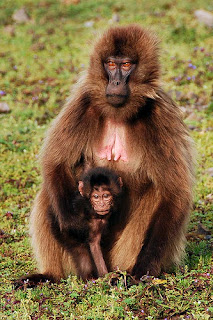Where would we be without yeast? Sober, for one thing. And stuck assembling our sandwiches between two crackers. Humans have relied on the hardworking microorganism for millennia to keep us fed and festive. Without realizing it, we may also have been relying on yeast's insect helpers: wasps that escort it around, store it during winter, and regurgitate it up for the next generation.
Yeast—avert your eyes now if you're squeamish about fungus—is a fungus. Just by going about its regular business, it makes our wines and beers alcoholic and our bread puffy. We use strains of the species Saccharomyces cerevisiae for most of these tasks, though there are many hundreds of other species in the world. And we've been doing it since ancient times: The DNA of S. cerevisiae used for winemaking has turned up in Chinese pots more than 7,000 years old.
The yeast strains we bake and brew with live all over the world. These days we produce them commercially, but they also appear in the wild. Yeast lives on the surface of ripe grapes, for example, where it can be used in the winemaking process. One of many unanswered questions about the history of our relationship with yeast is how it gets there, or anywhere else.
S. cerevisiae can't float through the air; it needs to be carried from place to place. So how have our favorite strains spread all over the world, even to places where humans don't take them? How does yeast appear among the grape vines just in time for the harvest each year?
Researchers led by Irene Stefanini and Leonardo Dapporto at the University of Florence suspected that wasps might hold an answer. Social wasps (the kinds that live together in colonies) are known for feeding on grapes. Additionally, the scientists had a hunch about how wasps might usher yeast from one year into the next, despite the brief lifespans they share with other insects.
From sites around Italy, the researchers gathered 61 wasps that included species of paper wasps (Polistes) and European hornets (Vespa crabro). Then they dissected their stomachs in search of yeast. Hundreds of varieties turned up, including 17 strains of S. cerevisiae. When they checked some honeybee stomachs for comparison, they found no S. cerevisiae strains. Wasps were the right track.
Unlike the other yeast species inside wasps, which tended to vary depending on the season the wasps were collected (and therefore what they were eating), S. cerevisiae remained at a steady level throughout the spring, summer, and fall. This supported the researchers' idea that wasps have a special relationship with S. cerevisiae, and showed that wasps could be responsible for spreading the yeast onto ripe grapes.
But they still had to demonstrate that wasps could account for the whereabouts of the yeast year-round, including in the winter. For this, they looked to certain celebrity females in the wasp world.
Each fall, as temperatures drop, most of the wasps in a colony die off. They leave behind young females that were fertilized during the mating season. These survivors hunker down to hibernate during winter. When it warms up again, the females emerge to start new nests. After these "foundresses" lay enough of their own fertilized eggs to create an entire new wasp colony, they die off too.
The researchers thought that foundress wasps might be the key: By feeding their larvae regurgitated meals, they could pass on the S. cerevisiae they've harbored in their guts all winter, completing the annual cycle and allowing new wasps to one day spread that yeast back to ripe grapes. They tested this idea by feeding young female wasps yeast that had been tagged with a fluorescent protein.
When those females were cut open after their winter hibernation, the fluorescent yeast was still in their guts. And when females were allowed to found new colonies, the tagged yeast appeared in the guts of their new larvae too. Although the larvae hadn't gone into the world to feed yet, regurgitated food from their mothers' gut had seeded new yeast collections in their bellies.
Just because wasps are a carrier for humans' preferred yeast strains doesn't mean they're the only carrier, the authors point out. Yeast might hide out in other homes during the winter. But social wasps certainly seem to be a close friend to S. cerevisiae. Looking at the genes of yeast found in wasp guts, the researchers found a menagerie that included wine, bread, and beer strains. It seems wasps have helped yeast maintain a diverse population around the world, and ensured that humans are never too far from our favorite microscopic fungus.
Irene Stefanini, Leonardo Dapporto, Jean-Luc Legras, Antonio Calabretta, Monica Di Paola, Carlotta De Filippo, Roberto Viola, Paolo Capretti, Mario Polsinelli, Stefano Turillazzi, & Duccio Cavalieri (2012). Role of social wasps in Saccharomyces cerevisiae
ecology and evolution. PNAS
Image: Thomas Quine/Flickr


































